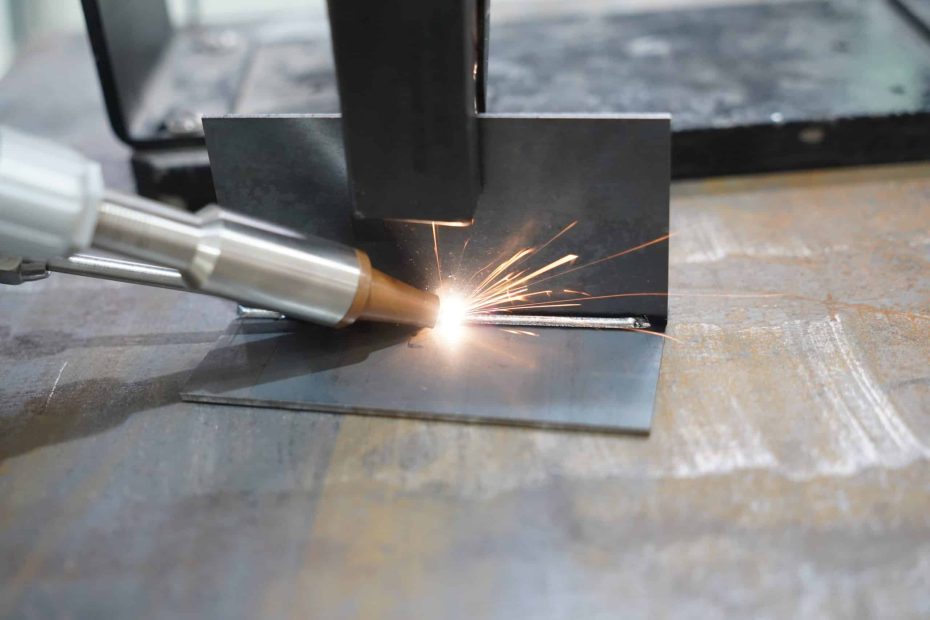Laser beams have revolutionized the welding industry, empowering component designers, manufacturers, and engineers to perfect prototypes, enhance repairs, and refine production techniques. The advanced technology offers unparalleled precision and efficiency, allowing for precise adjustments and improvements. By utilizing laser welding, industries can enhance product quality and streamline development processes, setting a new standard for innovation and performance in manufacturing.
-
Table of Contents
High Power Density
High power density in laser beam welding refers to the concentration of energy delivered by the laser beam over a tiny area, resulting in megawatts per square centimeter (MW/cm²). The capability allows for tiny heat-affected zones (HAZ), minimizing thermal distortion and damage to the surrounding material.
It also facilitates rapid heating and cooling rates, which speeds up the process and reduces thermal stress. These attributes are crucial for applications demanding high precision, such as engraving, repairing turbines, and cleaning medical components, where maintaining tight tolerances and avoiding thermal impact is essential. Skilled operators help control the laser’s focus, power, and movement to exploit these benefits and ensure high-quality welds.
-
Flexibility in Laser Mode
Laser beam welding provides exceptional beam adaptability by allowing operators to switch between continuous and pulsed laser modes based on specific requirements. For example, laser energy packets, emitting millisecond-long bursts, are ideal for welding thin materials like razor blades. The mode delivers precise energy control, minimizing the risk of overheating and preserving the integrity of delicate components.
In contrast, continuous lasers offer a steady, uninterrupted energy stream, making them perfect for deeper welds in thicker materials. The continuous mode ensures consistent penetration and robust fusion. The ease of shifting from continuous to pulsed laser modes, and vice versa, offers exceptional flexibility, allowing laser welding to adapt to various applications. This adaptability enhances LBW’s effectiveness, making it ideal for multiple industries, from precision medical devices to heavy industrial components.
-
Simplified Welding Atmosphere
Laser welding benefits significantly from its ability to operate effectively in ambient air, unlike many traditional welding methods that necessitate controlled environments, such as vacuums. The air transmission capability simplifies the welding setup, reducing the complexity and costs of maintaining a vacuum or using specialized shielding gases.
Laser welding streamlines the process by eliminating the need for a controlled atmosphere and makes it more accessible for a wide range of industrial applications. The technology enhances its practicality and cost-effectiveness, allowing for efficient and economical welding in various environments. However, ensuring you partner with a TIG welding company experienced in laser welding is crucial in optimizing the welding process, providing precision, quality, and reliability while selecting the correct parameters and techniques for each application.
-
Minimal Gaseous Emissions and Less Particulate Matter
Laser beam welding (LBW) produces minimal gaseous emissions and less particulate matter due to its focused energy and efficient process. By concentrating the laser beam on a small area, LBW reduces excessive vaporization, limiting gas production. Inert shielding gases protect the weld without creating harmful emissions.
That also minimizes splashing and spattering, leading to fewer particulates. The reduced emissions and particulates benefit the environment and improve the weld’s quality by preventing contamination and ensuring cleaner results. That makes LBW a cleaner, more practical choice for high-quality welding applications.
-
Ease of Welding Automation
Automation is a critical driver behind the success of laser welding. By integrating robotic machinery and automated systems, laser welding achieves high precision, consistent quality, and increased productivity.
Automation minimizes human error, handles repetitive tasks efficiently, and streamlines production processes, making LBW ideal for high-volume manufacturing and handling of complex applications. The capability enhances overall operational efficiency and contributes significantly to the technology’s effectiveness and widespread adoption.
In conclusion, leveraging laser beam welding technology is crucial for achieving exceptional precision, efficiency, and quality in various industrial applications. However, partnering with a reliable welding company like Micro Weld, equipped with the latest technology and skilled professionals, is essential to capitalize on these benefits fully. Such expertise ensures you can realize the full potential of laser welding, optimizing outcomes and maintaining high performance and reliability standards. That guarantees smooth continuity of operations, precise standard repairs, and client satisfaction.
